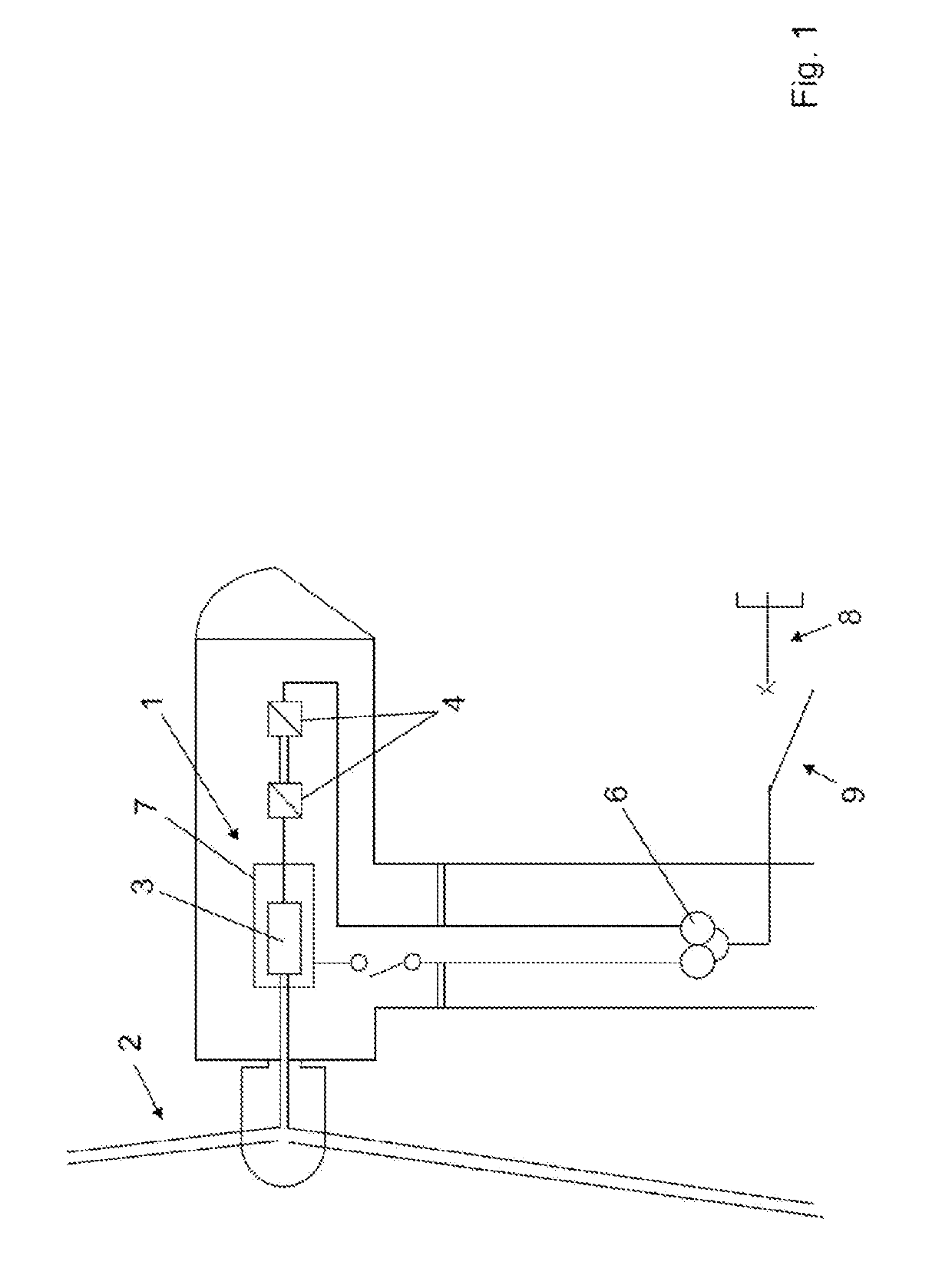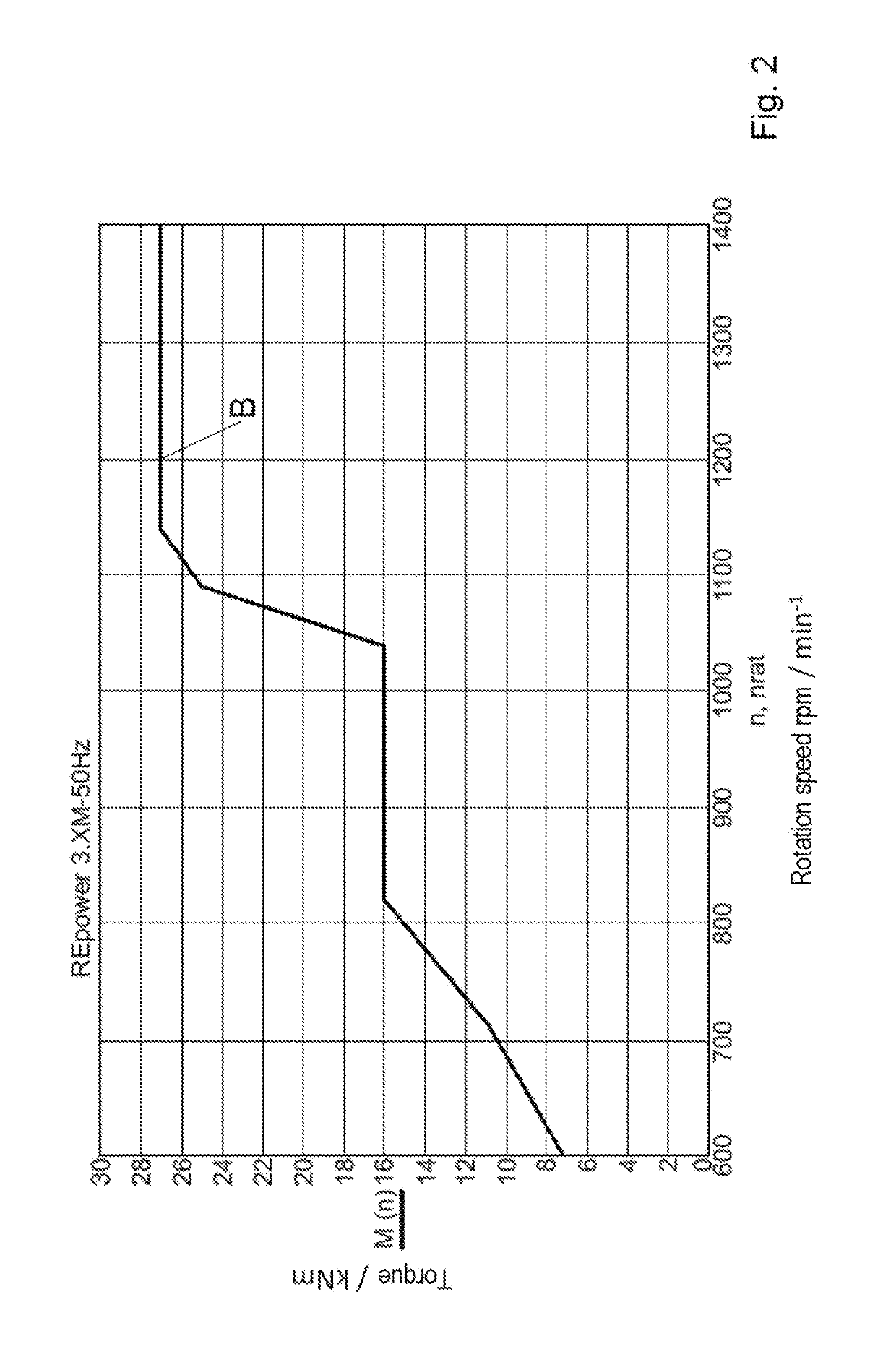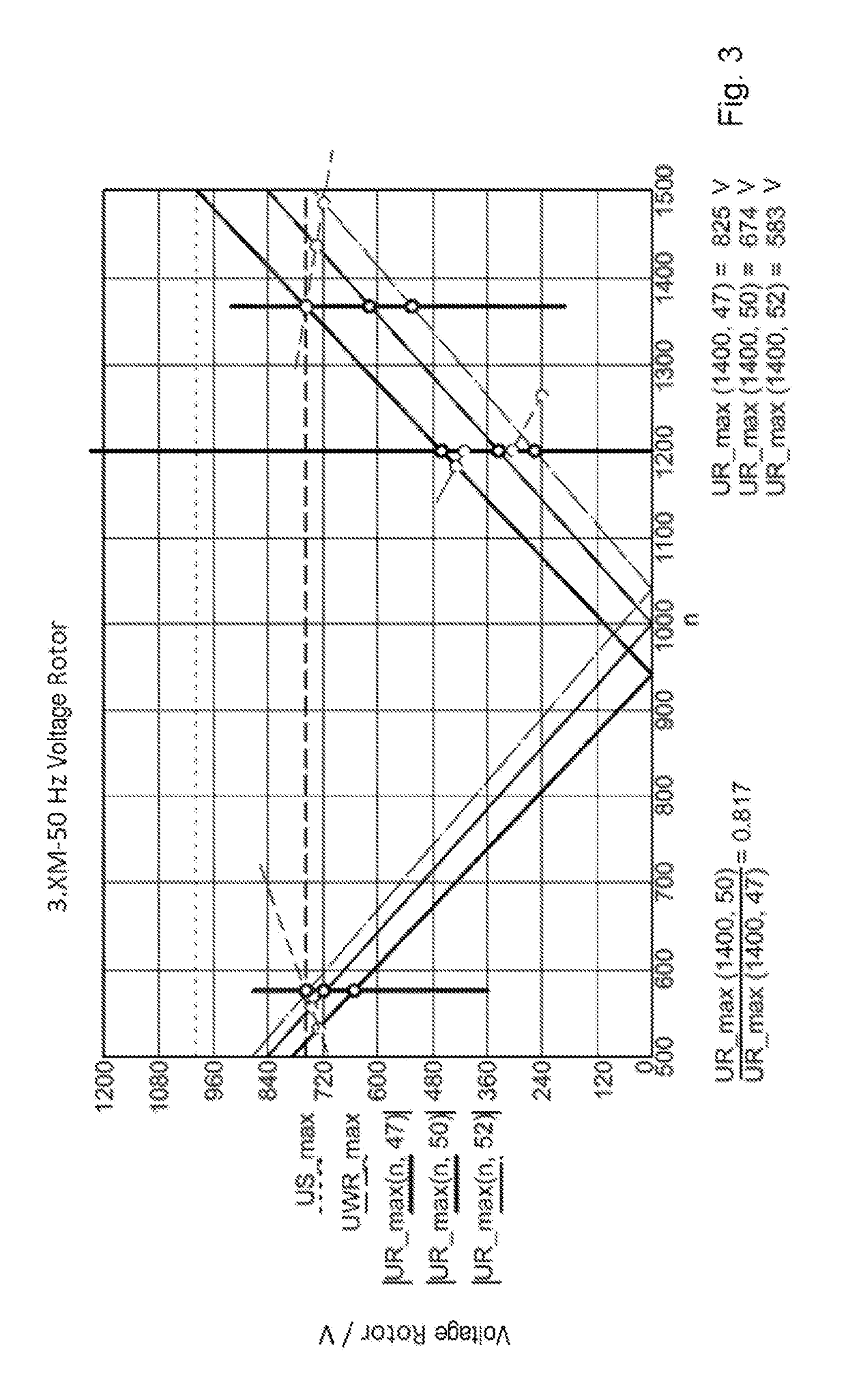Control of a Wind Turbine by Changing Rotation Rate Parameters
- Summary
- Abstract
- Description
- Claims
- Application Information
AI Technical Summary
Benefits of technology
Problems solved by technology
Method used
Image
Examples
Embodiment Construction
[0046]The general structure of a wind turbine with a doubly-fed induction generator 1 is shown in FIG. 1. A wind rotor 2 is set into rotational motion by wind. The wind rotor 2 is connected via a drive train to a transmission, not shown, to a rotor 3 of the doubly-fed induction generator 1. The doubly-fed induction generator 1 is electrically conductively connected to a converter 4 on the grid side. The converter 4 is in turn connected to the electricity grid via a transformer 6. On the other side, a stator 7 of the doubly-fed induction generator 1 is also connected to the transformer 6 via an electrically conductive connection. The transformer 6 is connected to the electrical grid 8 via a power switch 9.
[0047]The transformer 6 is designed with three windings. There are separate windings for the power circuit of the stator 7 and the converter 4. However, transformer designs with two or even a higher number of windings are also conceivable.
[0048]FIG. 2 shows a conventional torque-spe...
PUM
 Login to View More
Login to View More Abstract
Description
Claims
Application Information
 Login to View More
Login to View More - R&D
- Intellectual Property
- Life Sciences
- Materials
- Tech Scout
- Unparalleled Data Quality
- Higher Quality Content
- 60% Fewer Hallucinations
Browse by: Latest US Patents, China's latest patents, Technical Efficacy Thesaurus, Application Domain, Technology Topic, Popular Technical Reports.
© 2025 PatSnap. All rights reserved.Legal|Privacy policy|Modern Slavery Act Transparency Statement|Sitemap|About US| Contact US: help@patsnap.com



